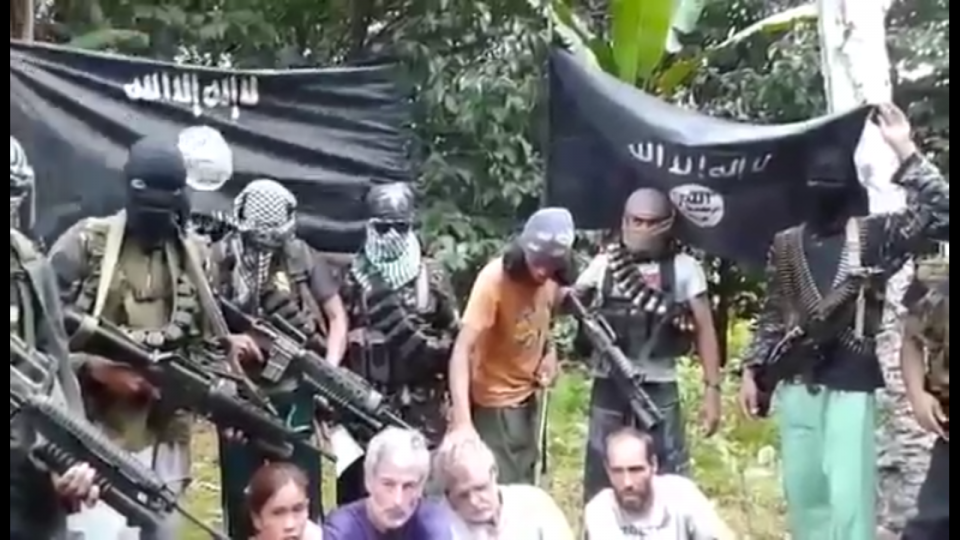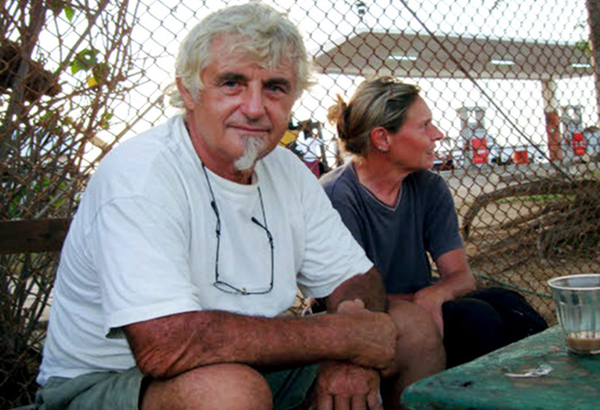
Abu Sayyaf has released a South Korean cargo ship captain and a Filipino crew member, held captive for more than three months, today (Saturday, January 14).
The ISIS-affiliated gunmen handed skipper Park Chul-hong and Glenn Alindajao over to the Moro National Liberation Front (MNLF), who then handed them to Philippine officials in Jolo town, in the predominantly Muslim Sulu province. MNLF has been engaged in peace talks with the government since 1996.
The South Korean registered cargo vessel, with the improbable name of Dong Bang Giant 2, was sailing to Australia from South Korea when 10 Abu Sayyaf militants boarded it in October and kidnapped Park and Alindajao.
The seafarers reported being beaten by their captors and forced to sleep in the jungle while surviving on dried fish and drinking unclean water.
“We were almost hopeless but I am thankful we were able to come home safely,” Mr Alindajao, aged 31, said in a news briefing.
South Korean Park Chung-Hung, 38, did not speak during the press conference but like Alindajao, appeared exhausted and disheveled.
The pair were medically assessed before being flown to Davao for further treatment. It is believed they will then be transferred to Manila.
It is not known if their release was secured with a ransom. Presidential peace adviser Jesus Dureza said: “You know the policy of the government, we don’t pay ransom. But, if there was some form of payment made, the government did not play any role in it.”
A confidential government ‘threat assessment report’ seen by The Associated Press last year, said Abu Sayyaf pocketed at least 353 million pesos ($7.3 million) from ransom kidnappings in the first six months of 2016.
As part of the peace deal signed with the government, the MNLF vowed to help free hostages and defeat the small but violent Abu Sayyaf, which is infamous for kidnappings, beheadings, bombings and extortion.
This week, we reported how militants with the ISIS-affiliated group released a video of kidnapped German sailor Jurgen Kantner standing in a freshly dug grave and wearing the all-too-familiar orange jumpsuit. The 70-year-old was abducted in November, during a seaborne attack in which his wife Sabine Merz was shot dead. (See our reports here, here and here).

Abu Sayyaf is still holding another two dozen captives on Jolo island, its stronghold where more than 10,000 troops have been deployed to fight the militants.
Mr Dureza described the conditions for the victims. “They were physically maltreated without any provocation,” he said. “They have been very stressed out. They were moved from one place to another, sometimes sleeping in forests, different houses, eating just dried fish and drinking water from brooks.
“The two hostages planned to escape but they could not. They discovered that the community around is very supportive, as they are able to benefit from (the kidnappings).”
Just this week, a young army officer was killed and four other personnel were injured fighting the group.
As well as the 70-year-old Mr Kantner, current captives of the group include people from the Netherlands, Japan, Indonesia, Malaysia and Vietnam. Last year, the group beheaded two Canadians.
It is believed that Abu Sayyaf includes a number of foreign jihadis. Last week, we reported how a British supermarket worker was arrested while en route to the Philippines to join the group. (See our report here)
The waters between the Philippines and Malaysia has become dangerous for merchant shipping due to rising threat of kidnappings, the International Maritime Bureau said this week.
Just last week eight fishermen were massacred onboard their boat by suspected pirates who pretended to be in distress in order to ambush them. (See our report here).
